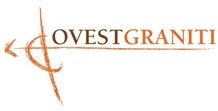Luserna Stone, whose extraction is documented by the mid-seventeenth century, was used as a building material since ancient times, even as an element to muratura04
He also had jobs as noble paving of the royal palaces of Turin, Racconigi and Venaria Reale, to name only the best known.
Another very important use is to lose the coverage desired by the architect Alessandro Antonelli for the Mole Antonelliana in Turin, in the structure of which were interspersed slabs, visible even today, between courses of bricks, in order to give greater strength to the building that, at the time of its construction, it was the world's tallest masonry. More generally, it appears that, in the period between the wars of the twentieth century, 90% of the stairs and sidewalks of Turin was in Luserna Stone.
The typical stones Luserna was, and still remains partially, the split of the blocks into slabs and their subsequent squaring in flooring products (slabs with hammered edges, random length with irregular sides, sidewalk curbs, trottatoi, cunettoni, cubes etc ... ..) Building real plates from balconies, corbels, steps, risers, sills, jambs and lintels, lists and tupure for the construction of the walls, etc ...), a cover (the famous lose roof) and from construction funeral.
From a geological perspective the Stone belongs to the Dora-Maira Massif and is the product of the metamorphic and structural transformations of an original Alpine magmatic rock of the late Hercynian, with chemistry leucogranitico. Petrographic stones Luserna are characterized by plane-weaving and schistose structure eteroblastica variable from place to place, but always with a tendency augen for the presence of porphyroclasts microcline, which rarely reach the size of the centimeter. Its mineralogy consists, besides of K-feldspar (10-25% by volume), quartz (30-40%), albite (15-25%), fengite (10-20%), which are associated in small quantities (typically less than 5%), biotite, chlorite, zoisite and / or Clinozoisite / epidote. In addition to the common accessories, represented by opaque minerals, titanite, apatite and zircon, which can locally be associated tourmaline, carbonates and rare axinite, is characteristically present the Flourite.

